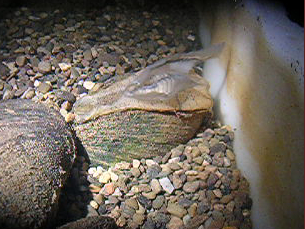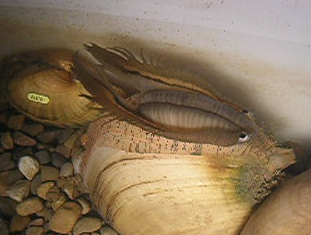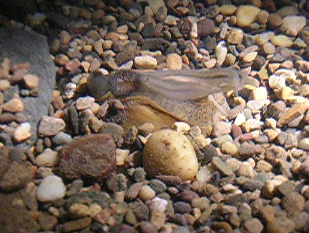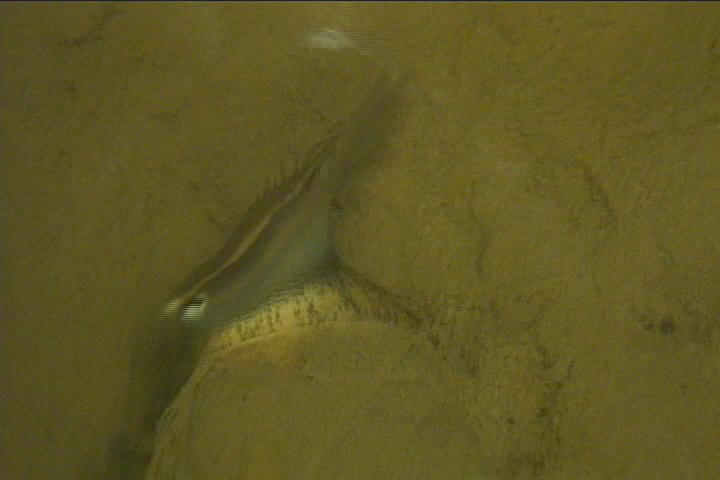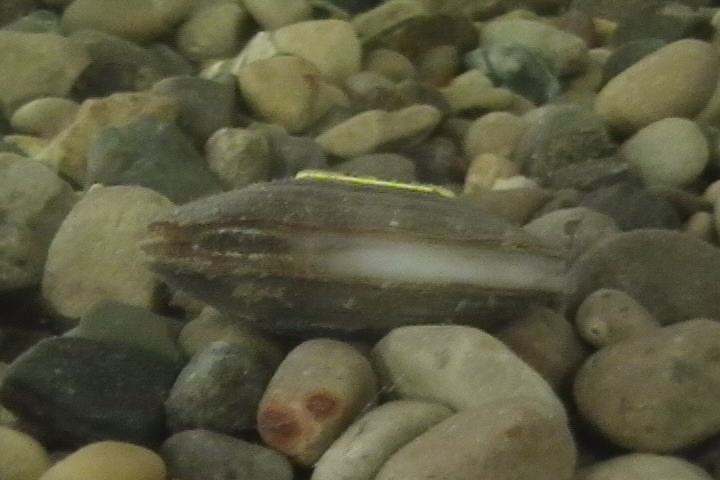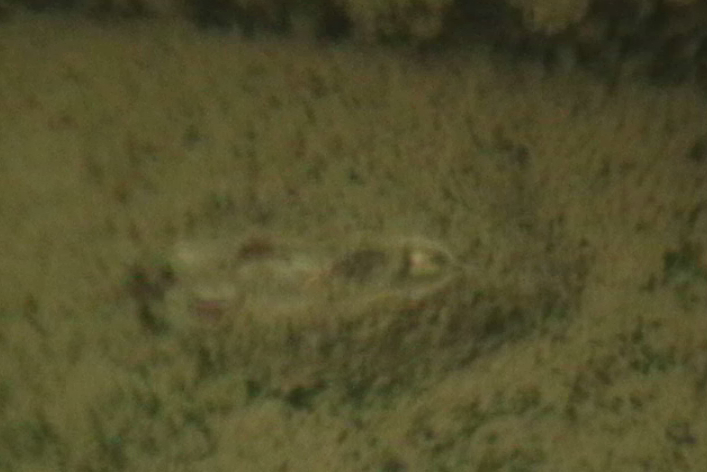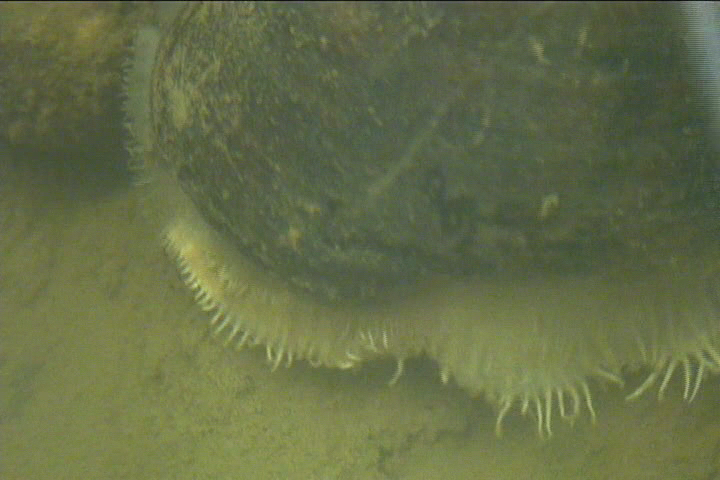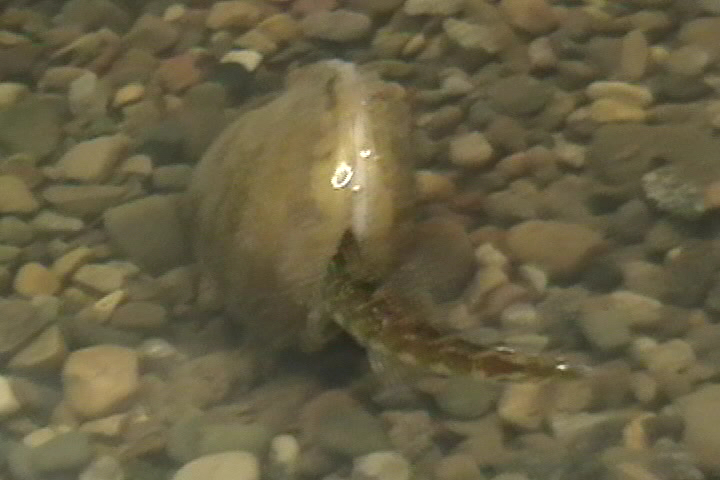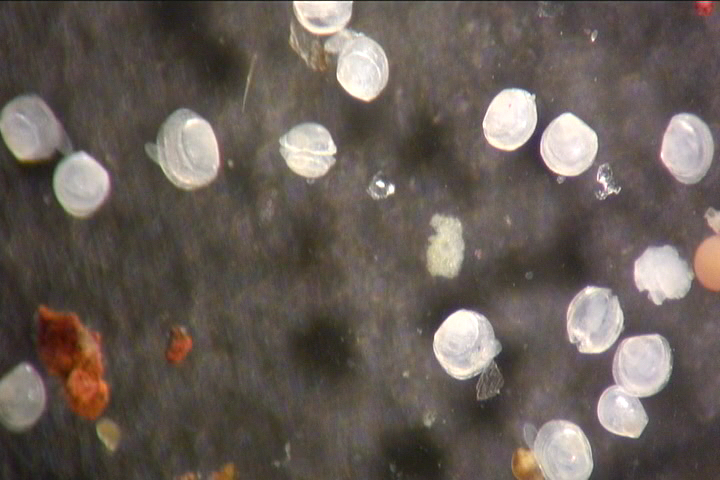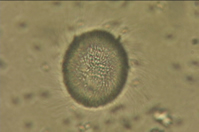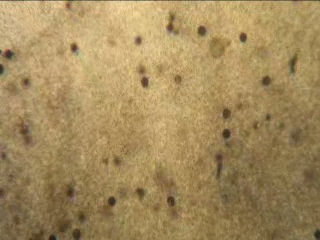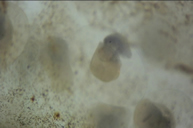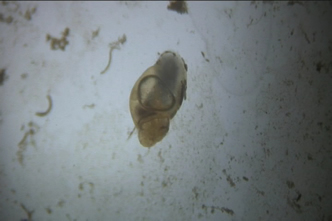Videos
Videos require Quicktime
Some freshwater mussels have evolved unique mantle modifications and behaviors to lure host fish to be parasitized. A few can be seen below.
Northern Riffleshell (Epioblasma torulosa rangiana)
Spermatozeugmata ("sperm balls"). Freshwater mussel males release sperm in structures called spermatozeugmata. Resembling a colony of Volvox, sperm are embedded head-first in a double-layered hollow sphere. The "sperm balls" seen here are from the Giant Floater, Pyganodon grandis.
Although sperm are released as spermatozeugmata it is obvious that they cannot fertilize eggs in this state. How and when spermatozeugmata are dissociated into individual sperm was unknown. In a simple experiment, shown here, fluid was removed from a female's intra-branchial space and added to spermatozeugmata. The result is dramatic. In the "Dissocation" video, once the camera stops moving, note a wave of dissociation beginning in the upper left (where the fluid was added). Clearly, when spermatozeugmata contact fluid from the female's gills they dissociate and are available to fertilize eggs. We are now isolating the component of the fluid responsible for the dissociation. The mechanism of dissociation remains unknown.
Lymnaea stagnalis. We have had a colony of this species since 2003. The videos show this snail just before and after hatching from the gelatinous egg mass.
